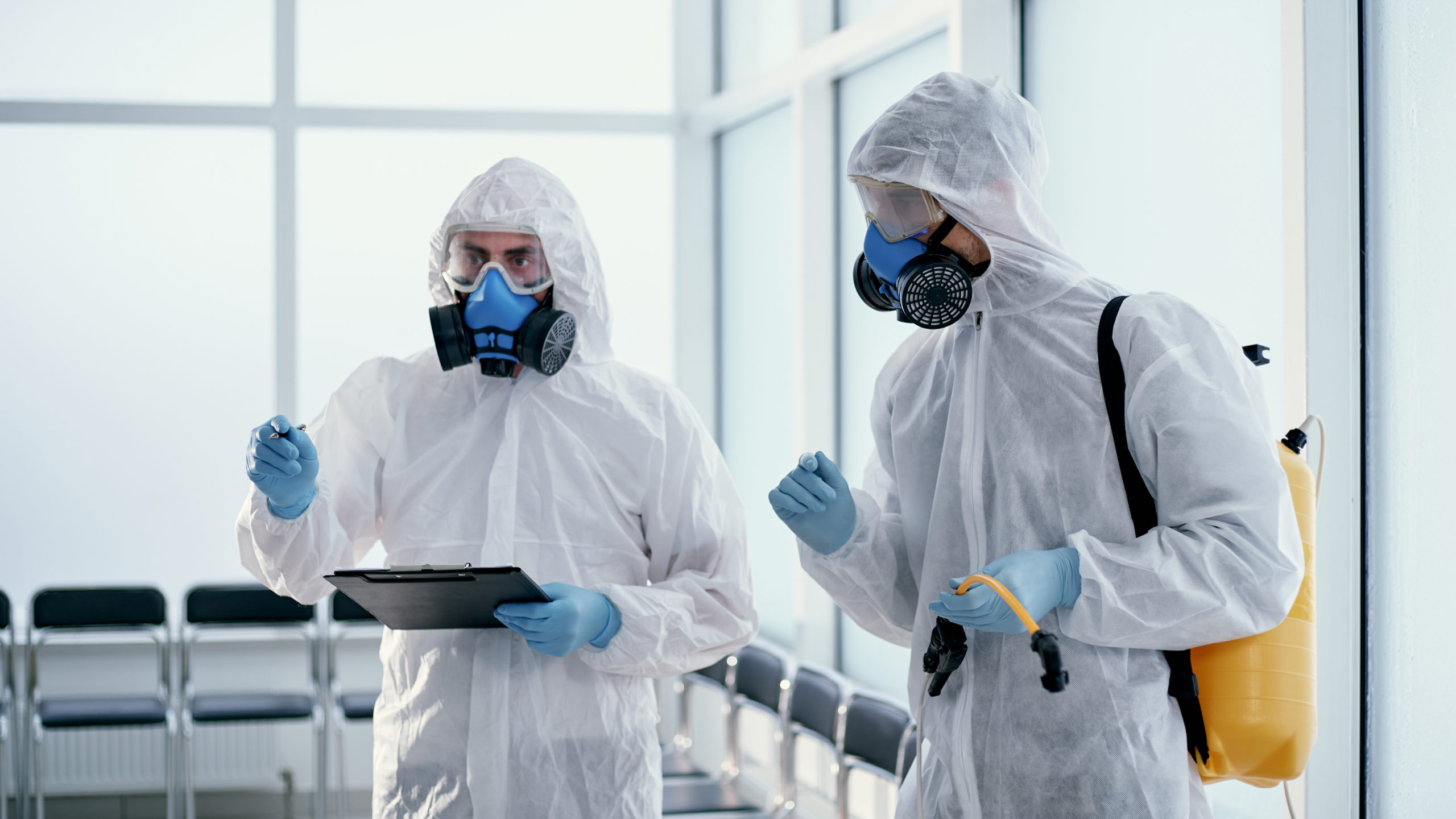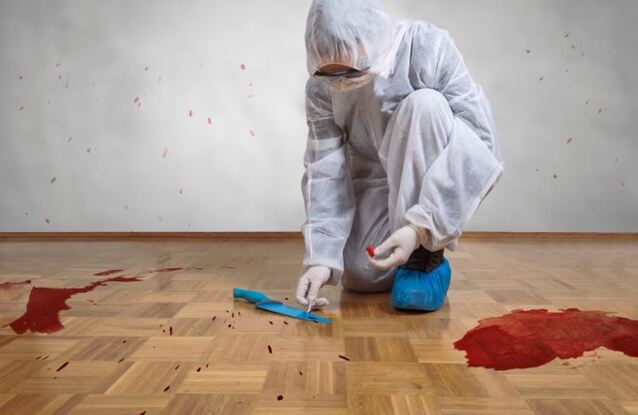Clandestine Lab Cleanup: Comprehensive Purification for Hazardous Sites
Clandestine Lab Cleanup: Comprehensive Purification for Hazardous Sites
Blog Article
Specialist Biohazard Cleansing and Decontamination for Blood, Bodily Fluids, and Hazardous Materials
The potential health and wellness threats connected with direct exposure to biohazards underscore the critical requirement for thorough handling and extensive cleaning. As we browse the elaborate landscape of biohazard clean-up, recognizing the nuances of policies, compliance, and the specialized devices at play comes to be essential in making sure a extensive and secure purification process.
Health Risks of Biohazard Direct Exposure
Direct exposure to biohazards postures significant health dangers that can lead to serious effects for neighborhoods and individuals alike. Biohazards encompass a broad variety of biological compounds, including blood, bodily fluids, mold, bacteria, infections, and other potentially infectious materials. When individuals enter call with these biohazards, whether via crashes, inappropriate handling, or environmental exposure, they face the risk of having significant illnesses or diseases.
One of the key wellness threats connected with biohazard direct exposure is the transmission of infectious illness. Bloodborne pathogens such as HIV, liver disease B and C, and different microorganisms can be existing in biohazardous materials, positioning a direct threat to human wellness. Breathing in airborne biohazards like mold spores or entering into call with polluted surfaces can also lead to breathing issues, allergic reactions, and various other unfavorable health results.
Moreover, biohazard exposure can have lasting health implications, with some conditions materializing years after the initial call (Blood Cleanup). As a result, it is important to prioritize appropriate biohazard cleaning and purification to reduce these health threats and guarantee the safety and security of neighborhoods and individuals

Specialized Educating for Biohazard Cleanup
When it concerns taking care of biohazard cleanup efficiently and safely, specialized training plays a basic duty in guaranteeing appropriate purification treatments are followed. Biohazard clean-up needs details expertise and skills to efficiently alleviate dangers related to bloodborne virus, physical liquids, and hazardous materials. Experts trained in biohazard clean-up go through extensive guideline on just how to securely take care of, get rid of, and get rid of biohazardous products to stop contamination and direct exposure.
Specialized training for biohazard cleaning covers an array of crucial subjects, consisting of correct individual safety devices (PPE) usage, bloodborne microorganism understanding, decontamination techniques, and contaminated materials disposal protocols. Individuals learnt biohazard cleaning are outfitted with the essential expertise to assess contamination degrees, recognize prospective dangers, and execute suitable cleanup treatments in conformity with regulative standards.
Continuous training and education and learning are vital in the field of biohazard cleanup to remain upgraded on the most up to date decontamination modern technologies, safety and security procedures, and regulations. By spending in specialized training, biohazard clean-up professionals can properly react to emergency cleanup scenarios and protect both public health and the setting.
Significance of Proper Purification Strategies
Using appropriate decontamination strategies is vital in biohazard cleanup to properly get rid of hazardous products and minimize wellness dangers. Effective purification not just makes certain the removal of noticeable traces of blood, bodily fluids, and various other biohazards but likewise targets unnoticeable virus that may present serious health and wellness hazards if not appropriately eradicated. By complying with rigorous decontamination procedures, educated professionals can dramatically reduce the danger of direct exposure to dangerous bacteria, infections, and microorganisms that could result in infections or conditions.
Proper purification strategies entail the use of specific devices and anti-bacterials that are specifically developed to reduce the effects of biohazards successfully. Comprehensive cleaning and disinfection of polluted locations are important to prevent the spread of microorganisms and make sure Our site a risk-free setting for owners. In addition, the correct disposal of biohazardous waste following decontamination procedures is important in stopping contamination of various other surface areas or individuals.

Equipment and Devices for Safe Cleaning
The correct devices and tools play an essential role in making certain the reliable and risk-free cleanup of biohazardous products. When taking care of blood, bodily fluids, or unsafe materials, see biohazard cleansing experts rely on specialized equipment to reduce direct exposure dangers and thoroughly sanitize the afflicted location. Personal safety devices (PPE) such as handwear covers, masks, coveralls, and safety glasses are vital to shield against straight contact with possibly contagious products. Furthermore, biohazard cleaning sets containing anti-bacterials, absorbent products, and biohazard bags are used to safely have and get rid of of infected products. Blood Cleanup.
Advanced cleansing tools like hospital-grade disinfectants, HEPA-filtered vacuum cleaners, and misting equipments are employed to sterilize surface areas and get rid of biohazards effectively. Specialized equipment such as sharps containers and biohazard waste disposal bins are used to securely take care of sharp things and biohazardous waste materials. By utilizing the best devices and devices, biohazard cleansing experts can make certain a comprehensive clean-up procedure that focuses on safety and reduces health and wellness dangers for both employees and owners of the damaged room.
Rules and Conformity in Biohazard Cleansing
Correct adherence to laws and conformity criteria is paramount in biohazard cleaning to ensure the safety of both personnel and click here now the environment. Federal government firms such as OSHA (Occupational Safety And Security and Wellness Management) and the EPA (Epa) have established particular standards for biohazard cleanup procedures to minimize wellness threats and environmental contamination. These policies cover a series of aspects consisting of the handling, transport, and disposal of biohazardous materials, as well as the essential training and safety tools required for personnel entailed in the cleaning process.
Biohazard cleaning firms need to stay current with these guidelines to ensure that their procedures satisfy the required safety and security criteria. Failure to abide with these guidelines can result in extreme repercussions, including penalties, legal activity, and threatening the health of people and the environment. By adhering to strict guidelines and conformity steps, biohazard cleansing firms can efficiently minimize risks and make sure a extensive and safe cleaning process for all celebrations involved.
Final Thought
To conclude, biohazard cleansing and purification require customized training, correct techniques, and adherence to guidelines. Direct exposure to blood, bodily liquids, and dangerous products postures considerable wellness threats, making it important to make use of the right devices and devices for secure cleanup. By complying with rigorous methods and guidelines, professionals can successfully minimize the dangers connected with biohazard direct exposure and make certain the safety of both themselves and others.
As we navigate the elaborate landscape of biohazard clean-up, recognizing the subtleties of regulations, compliance, and the specialized equipment at play becomes necessary in guaranteeing a detailed and secure decontamination process. (Blood Cleanup)
When it comes to handling biohazard cleanup efficiently and safely, specialized training plays a fundamental role in ensuring proper decontamination procedures are followed.Utilizing proper purification strategies is critical in biohazard cleaning to properly lessen and get rid of dangerous products wellness threats. Furthermore, biohazard cleaning kits containing anti-bacterials, absorbing materials, and biohazard bags are used to safely dispose and contain of infected things.
Federal government companies such as OSHA (Occupational Safety and Wellness Management) and the EPA (Environmental Security Agency) have actually established specific standards for biohazard clean-up procedures to lessen health and wellness risks and ecological contamination.
Report this page